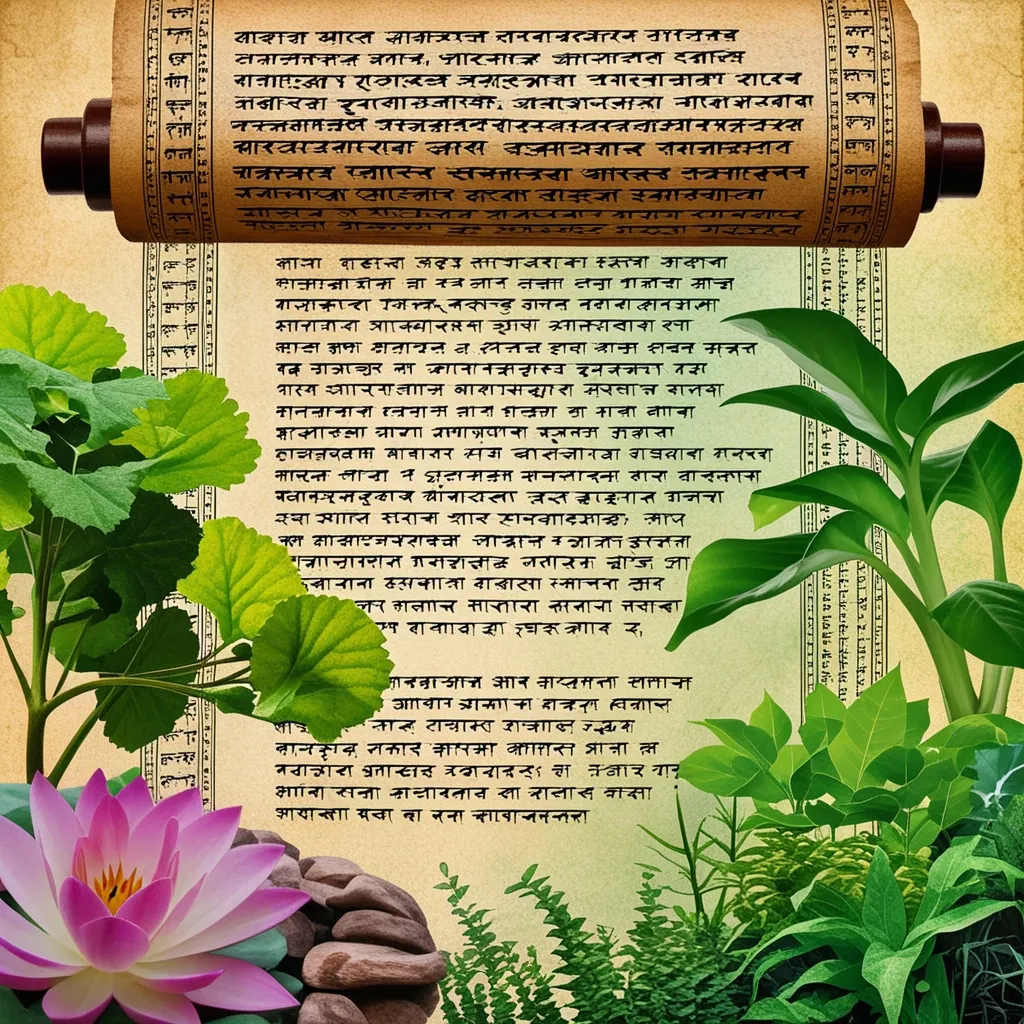Ayurveda, that ancient treasure trove of Indian medicine, was born in the Vedic tradition, especially in the Yajur Veda. It’s like Ayurveda’s blueprint was sketched right there in the sacred verses.
Now, talk about the Vedas! These sacred texts are like the OG scriptures in the world of spiritual literature. Written in the age-old language of Sanskrit, they’ve been passed down orally for eons before being inked down between 1500 BCE and 500 CE. The Yajur Veda, one of the four main Vedas, packs a special punch when it comes to Ayurveda. It’s got all these detailed rituals and practices like the extraction and fermentation of Soma Rasa during the Sautramani Yaga, which are pretty much the building blocks of Ayurvedic medicine.
Digging deeper, the Yajur Veda spills some serious tea on health and disease. It even talks about how the six seasons mess with our bodies and throw our doshas (Vata, Pitta, and Kapha) out of whack. These are later expanded in the Charaka Samhita and Sushruta Samhita. It’s all about the balance - good health means doshas are in sync, while any imbalance spells trouble.
Ayurveda isn’t just a one-trick pony. It branched out into eight specialties over time. Think of it as an ancient medical school with different departments: internal medicine, surgery, pediatrics, toxicology, and more. The Yajur Veda was the cornerstone that these departments built upon, always considering how body, mind, and environment interact for holistic healing.
Central to it all are the three doshas - Vata, Pitta, and Kapha. They’re like the triad of health in Ayurveda, each tied to natural elements like space, air, fire, water, and earth. The doshas run the show when it comes to making sure our bodies are in balance. The Yajur Veda’s insights into nature laid the groundwork for understanding how these doshas operate within us. Keeping them balanced means good health, and any imbalance needs to be fixed to avoid falling sick.
Let’s not forget the green pharmacy of Ayurveda - medicinal plants. The Vedas are like an ancient garden catalog, listing out plants and their healing powers. The Rig Veda and Atharva Veda, for instance, mention 67 and 293 medicinal plants respectively. This went on to form the extensive herbal remedies detailed in Ayurvedic texts. It’s kind of cool knowing that nature has got our back when it comes to healing and maintaining health.
Ayurvedic rituals also find their origins in Vedic ceremonies. The Yajur Veda, for example, talks about rituals like the Sautramani Yaga, which involved healing elements like Soma Rasa. These evolved into Ayurvedic treatments involving herbs and other procedures to bring balance to the body. Soothing and restoring the body’s natural order was just as much about spiritual harmony as it was about physical health.
Over the centuries, this Vedic wisdom was compiled into sacred texts known as the Samhitas - the Charaka Samhita, Sushruta Samhita, and Ashtanga Hridayam Samhita being the big names. These texts are like ancient medical encyclopedias, building on the knowledge from the Yajur Veda and other Vedic scriptures. They offer a treasure trove of Ayurvedic principles, treatments, and practices that are still relevant today.
Even in our modern world, the Vedic roots of Ayurveda are thriving. People worldwide are turning to Ayurveda’s holistic approach to health. With its focus on natural healing, a balanced lifestyle, and medicinal plants, Ayurveda offers ancient wisdom that’s still a health trendsetter.
The influence of the Yajur Veda on Ayurveda is both deep and broad. Whether it’s about the central concept of doshas, the extensive use of medicinal plants, the rituals, or the specialized branches of medicine, the Yajur Veda has significantly shaped Ayurvedic practice. It’s a testament to the timeless relevance of Vedic knowledge in promoting health and well-being.
Ayurveda isn’t just about treating diseases; it’s a complete lifestyle aimed at harmonizing the physical, mental, and spiritual aspects of life. The ancient healing hymns and medical principles in the Yajur Veda show the profound understanding our ancestors had about the interconnectedness of nature, health, and the universe. Embracing and applying this ancient wisdom today is like paying homage to the legacy of the Vedas and the enduring principles of Ayurveda.






